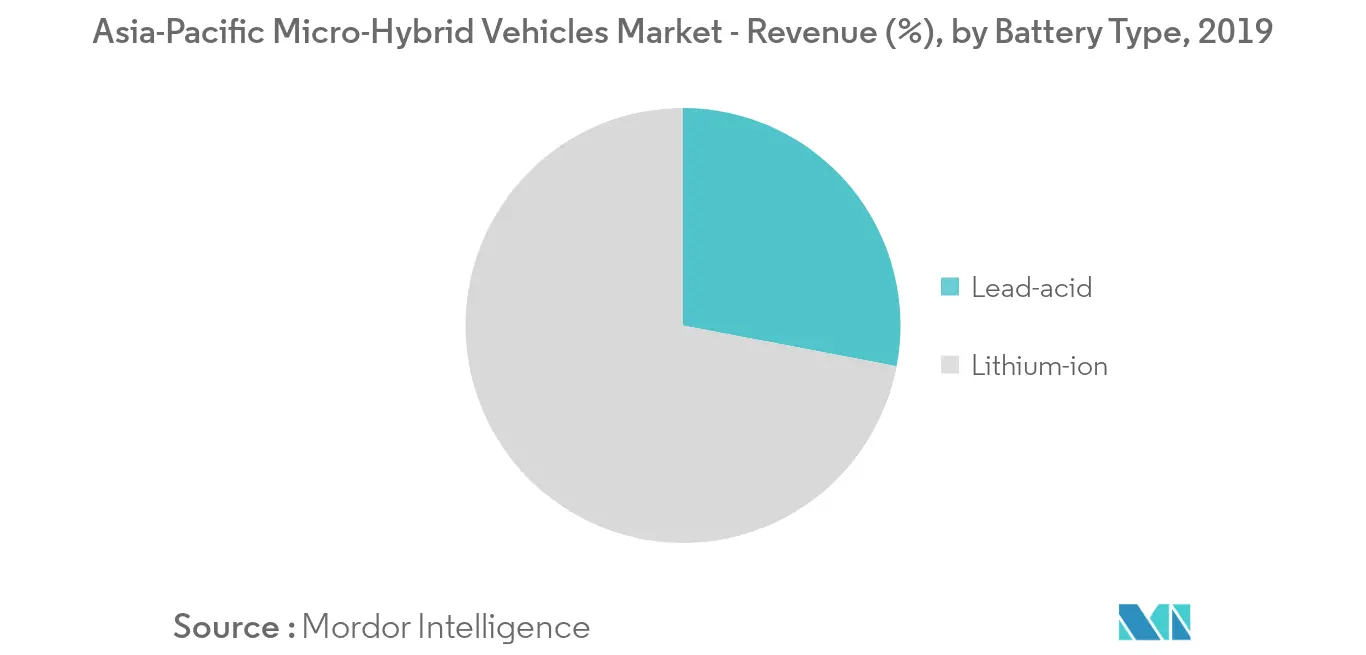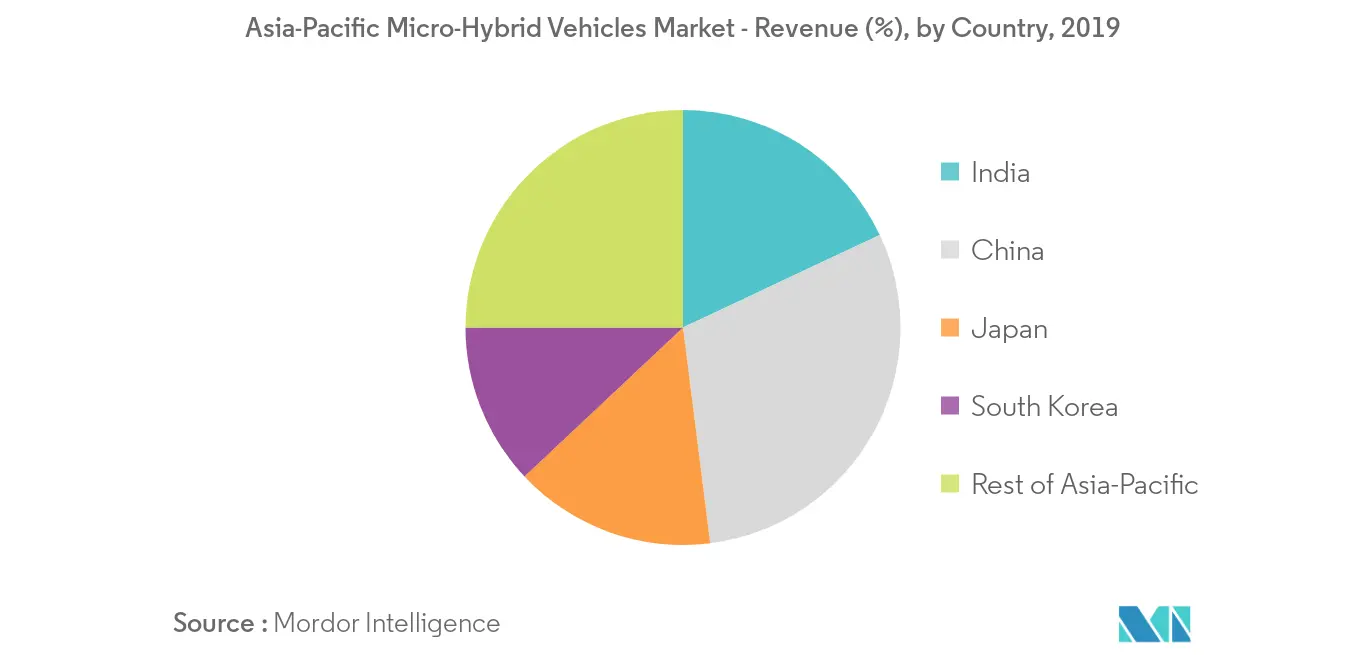Market Trends of Asia-Pacific Micro-Hybrid Vehicles Industry
This section covers the major market trends shaping the APAC Micro-Hybrid Vehicles Market according to our research experts:
Increasing Demand for Lithium-ion Batteries
Currently, the lithium-ion battery segment is experiencing more demand and is projected to be the fastest growing battery type in the upcoming years mainly due to the increasing sales and demand for battery electric vehicles. However, electric vehicles are causing a restraint to the market but their increasing sale is driving the market. Also, the stringent emission standards, better fuel efficiency, and government incentives are few major factors driving this segment. Battery manufacturers are partnering with OEMs and this is in-turn increasing the vehicle sales as well.
Most of the governments in Asia-Pacific region such as China, Japan, and Singapore have either lifted taxes or have given a considerable amount of tax exemption on purchase of EVs. These initiatives by the government have attracted a lot of customers to purchase EVs and attributed to the increasing sales of Lithium-ion batteries. For instance,
- In April 2020, the China government has introduced 10% service tax waiver for electric vehicles to boost the demand of the market due to Covid-19 impact.
Also, rapid growth in industrialization and increasing technology in countries like China, India, and ASEAN countries. For instance,
- In September 2018, Amara Raja Batteries Ltd., which is India's second-biggest traditional battery market, had announced to build a new 100 megawatt-hour assembly plant in the southern state of Andhra Pradesh. The company also announced that the market for electric vehicle power packs is set to grow of USD 300 Billion by 2030.
- In June 2018, Toshiba Corporation, Sojitz Corporation and CBMM (Companhia Brasileira de Metalurgia e Mineração) have announced the joint research and development agreement on next-generation lithium-ion battery material using Niobium Titanium Oxide (NTO). The three companies will be working on development of a next generation lithium-ion battery which is characterized by its high-energy density and ultra-rapid recharging capability required for automotive applications.
Thus, the increasing demand for lithium-ion batteries and such developments shall lead this segment to experience more demand.

China Holds a Significant Share in the Asia-Pacific Region
Across the regions in Asia-Pacific, China holds a significant share in the hybrid vehicles market share owing to their highest vehicles sales. This can be attributed to their increasing population which is catering to the growth in vehicle sales and stringent government emission norms. For instance, The Chinese government is implementing China 6 norms for pollution control in the region which are stricter than previous China 5 norms and are based on EURO 6 norms, form July 2020, which results in supporting the demand of micro hybrid vehicles in this region.
Currently, vehicle manufacturers such as Toyota and Honda have been dominating the hybrid vehicle segment in China, with their models such as Toyota Corolla Hybrid and Honda Accord Hybrid.
- In the first three quarters of 2019, Corolla Hybrid sold 38,540 units in China, which has accounted for nearly 20% increase of total hybrid deliveries during the period.
According to the China Association of Automobile Manufacturers (CAAM), hybrid vehicle sales in China will reach 300,000 units by the end of 2019, up 4.3% from 2018. Also, the demand for EVs and plug-in hybrids are expected to decrease widely, as the subsidies for them are reducing.
Also, electric vehicle manufacturers have been signing contracts or deals with China battery manufacturers. For instance,
- In November 2019, BMW Group has signed a contract of USD 4 Million to buy batteries from CATL, a Chinese battery manufacturer, to support its vehicle electrification drive.
Growing income levels and environmental concerns in China are an also major reason which is driving the market over the forecast period. This, in turn, is expected to result in increased investments in automotive technologies in China


